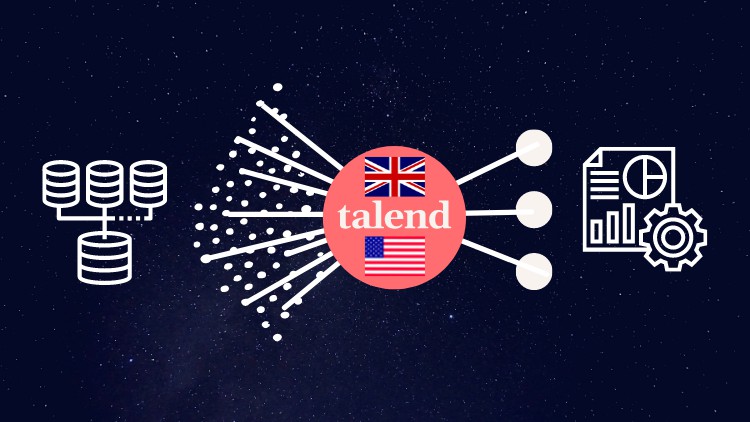
Talend Tutotrial with Talend Open Studio for Data Integration, Big Data, ETL, Data Warehouse, Data Migration, Cloud, BI
What you will learn
connect your data sources, such as files, databases, XML, web services, Google Drive and more formats
build your own integration processes using practical examples and comprehensive scenarios
master the most important transformations like mappings, joins, aggregations and sorting
orchestrate processes into larger units by using preJobs, postJobs, variable and hierachies
Description
Data. Everywhere. All well-behaved in their own environment. But who actually lets them talk to each other? You do. With data integration. Become a data savant and add value with ETL and your new knowledge!
Talend Open Studio is an open, flexible data integration solution. You build your processes with a graphical editor and over 600 components provide flexibility.
Each section has a practical example and you will receive this complete material at the beginning of the course. So you can not only view each section, but also compare it to your own solution. There are also extensive practical scenarios included. So you’ll be well equipped for practice!
What are the biggest topics you can expect?
- Installation on different operating systems (Windows, Linux, Mac)
- understanding and using important data types
- reading and writing from databases
- process different file formats, like Excel, XML, JSON, delimited, positional
- create and use metadata
- build schemas
- use helpful keyboard shortcuts
- retrieve data from WebServices
- connect to GoogleDrive and fetch data
- using iteration and loops
- convert data flows into iterations
- build and understand job hierarchies
- All major transformations: Map, join, normalize, pivot, and aggregate data
- create and extract XML and JSON
- use regular expressions
- Orchestrate components in processes
- Check and improve data quality
- Use fuzzy matching and interval matching
- Use variables for different environments
- Perform schema validation
- Handle reject data separately
- Find and fix errors quickly
- Write meaningful logs
- Include and react to warnings and aborts
- Build job hierarchies and pass data between different levels
- implement and test your own assumptions
- configure your project for logging, versioning and context loading
- learn best practices and establish your own
- document items and have documentation generated
What are you waiting for? See you in the course!